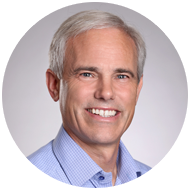What does the Enneagram say about guilt, shame and anxiety? We look to the Enneagram’s main centers – the Gut center, the Heart center and the Head center – for answers.
Guilt emanates from the Gut center – Types 8, 9 and 1. Shame dominates the Heart center – Types 2, 3, and 4. And anxiety famously affects the Head types –Types 5, 6 and 7.
In each center, which type is most acutely affected by these powerful feelings? To answer that, we turn to the Enneagram’s temperament triads using the triad labels in Teamwork 9.0 – the Optimist Triad (Types 3, 7 and 8), the Pessimist Triad (Type 1, 2 and 6) and the Symmetrical Triad (Type 4, 5 and 9).
I make the case that the Pessimist Triad types are those most motivated to avoid feelings of guilt, shame and anxiety, Type 1 actively avoids guilt, Type 2 avoids shame, and Type 6 avoids anxiety. On the other hand, the Optimist Triad types are those that purse the opposites of these strong feelings.
What are the opposites of guilt, shame and anxiety? They are pride, being valued, and happiness, pursued by Type 8s, Type 3s and Type 7s, respectively. That leaves the Symmetrical Triad – Types 4, 5 and 9 – in between, able to be motivated by either pursuit of positive feelings or avoidance of negative feelings.
In summary:
Guilt Avoidance: Type 1 — Pursuit of Pride: Type 8 — Either: Type 9
Shame Avoidance: Type 2 — Pursuit of being Valued: Type 3 — Either: Type 4
Anxiety Avoidance: Type 6 — Pursuit of Happiness: Type 7 — Either: Type 5
This video is an edited version of a talk I gave on this framework.
[Transcript]
Matt Schlegel:
What’s the opposite of guilt and what’s the opposite of shame, because maybe those will also give us some ideas about how this framework might work. But I know there’s another thing that does drive me, and that’s anxiety. So really I’m putting in anxiety into the mix of these strong underlying motivators for our feelings and behaviors. So we’ll talk about each one of those three plus what they look like in the opposite. So let’s look at some definitions. So for guilt, the dictionary definition of that is a feeling of having done wrong or failed in an obligation. And I thought about, well, what would be the opposite of that? Where I landed was pride would be the opposite of guilt, which is a feeling of deep pleasure or satisfaction derived from something you’ve done. So shame is a painful feeling of humiliation or distress caused by consciousness of wrong or foolish behavior.
Guilt seems to be from an inner sense of having done something wrong where shame, and I don’t know that they’ve captured this very well in this definition, but it seems to be more how the world perceives what you’ve done. Maybe that’s caught in that word humiliation, because humiliation is you need to be humiliated by the outside world. You don’t necessarily just feel humiliated by doing something and nobody else saw you. So I think that that word humiliation in there catches that sense of being assessed by the world for having done something wrong or foolish. Well, what would be the opposite of that? And to me, the opposite would be being valued or appreciated, so being recognized for one’s full worth. So that seemed to be the better definition of anti-shame. And then I added one more, which is anxiety, a feeling of worry, nervousness or unease typically about an imminent event or something with an uncertain outcome.
What is the word for anti-anxiety? Ataraxia is anti-anxiety, and this is a Greek term, a state of serene calmness. Who feels guilt, shame, and anxiety most acutely? I hear the ones, that was a very common theme for them. I had conversations with twos, they tell me that they really don’t feel shame but they’re so focused on helping other people. Where is the shame? If I am totally focused on helping you why should I feel shame? But why is it that they’re so focused on helping other people all the time? Is it because it’s driving them to avoid that feeling of shame?
For anxiety, I would put the six in the category of the one that feels anxiety the most. These three is that they’re the members of the same temperament triad, of the pessimist triad, the one, two, and six. The anti-shame people might be the optimists, the three, the seven, and the eight, who are most pursuing pride, recognition, and happiness. The eight, nine, and one would be mostly centered guilt. The twos, threes and fours would be centered on shame. And then the five, six and sevens would be centered on anxiety. Is there a role for anxiety and anti-anxiety, for shame and anti-shame, for guilt and anti-guilt?
